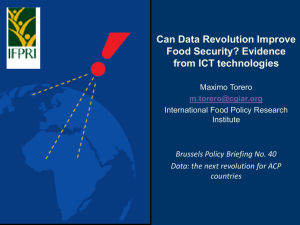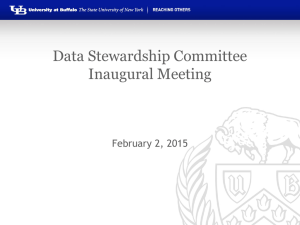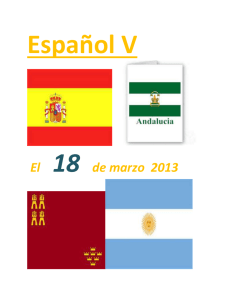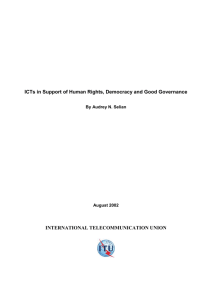SALSA: Knowledge-based Sustainable Value
advertisement
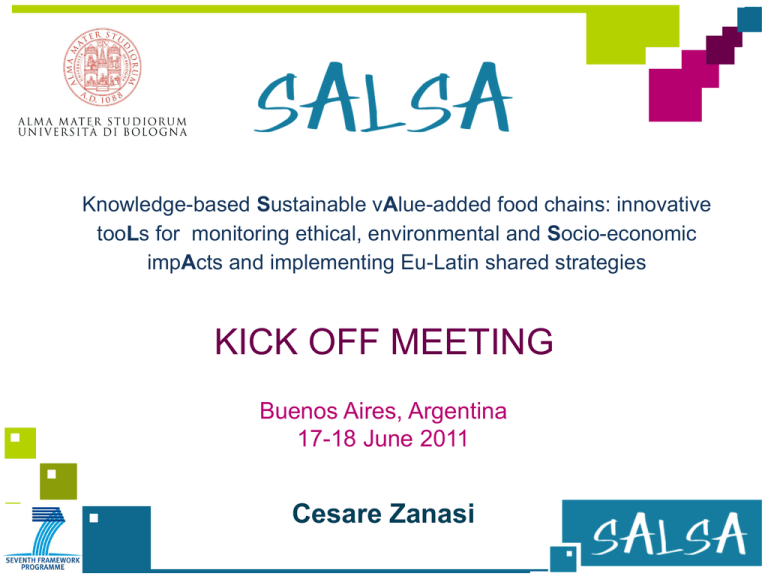
Knowledge-based Sustainable vAlue-added food chains: innovative tooLs for monitoring ethical, environmental and Socio-economic impActs and implementing Eu-Latin shared strategies KICK OFF MEETING Buenos Aires, Argentina 17-18 June 2011 Cesare Zanasi Relevant technical-scientific issues related to SALSA implementation Defining the Road Map for a common understanding Basic concepts, methods and actions (Cesare Zanasi – Cosimo Rota) Relevant technical-scientific issues related to SALSA implementation A. The life cycle thinking and management approach: main features (Cesare Zanasi – Cosimo Rota) Life Cycle Thinking Life Cycle Management Definition “...is the organizational dimension of the life cycle approaches…LCM uses various procedural and analytical tools for different applications and integrates economic, social and environmental aspects into an institutional context”. Life Cycle Management LCM tools: Integrated Management Systems (IMS) Life Cycle Assessment (LCA) Carbon Footprinting (CF) Life Cycle Design (LCD) Life Cycle Costing (LCC) Environmental Product Declaration (PE) Corporate Reporting (CR) Responsible Supply Chain Management (RSCM) Life Cycle Assessment Definition LCA is a compilation and evaluation of the inputs, outputs and other interventions and the current or potential environmental aspects and impacts throughout a product’s life cycle (i.e., “cradle to grave”). Life Cycle Assessment Life Cycle Assessment Steps of an LCA Goal and Scope Definition ISO 14041 Life Cycle Inventory Analysis ISO 14042 Life Cycle Impact Assessment Interpretation ISO 14041 ISO 14043 Life Cycle Assessment Extract from a Life Cycle Inventory – Dairy Plant Ingredients other than raw milk Country of origin Ingredients Transportation of ingredients to manufacturing plant Electrical and thermal energy use Source of energy (black Energy coal, natural gas, oil, LPG and biogas) Cogeneration systems Main chemicals used in cleaning-in-place (CIP) systems Chemicals (Caustic, nitric acid, triplex, sodium hypochlorite) Transportation of chemicals to manufacturing plant Water Quantity of water and water treatment process Solid waste Quantity of solids waste product and amount recycled Finished Quantity of product-milk, yoghurt, cheese, milk powder etc product produced at the manufacturing plant Life Cycle Assessment Life Cycle Assessment Source: Chassot, A., Philipp, A., Gaillard, G., 8. Wissenschaftstagung Ökologischer Landbau, Kassel, 1.-4. März 2005. 2005, 1-1 Life Cycle Costing Definition ...is as an assessment of all costs associated with the life cycle of a product that are directly covered by any one or more of the actors in the product life cycle (supplier, producer, user/consumer, EOL-actor)”. Life Cycle Costing $ $ Disposal & Post-Disposal Use Acquisition Acquisition Product A Product B Product A Product B Purchase Price Price + Life-Cycle Costs Product A appears cheaper Product B costs less overall Supply Chain Responsibility Supply Chain Responsibility Relevant technical-scientific issues related to SALSA implementation B. Focus on data inventory – relations with stakeholders Focus on data inventory/ relations with stakeholders Relevant issues 1. Define strategies to enhance the “willingness” to cooperate in data collection and management; encouraging collaboration among stakeholders Focus on data inventory/ relations with stakeholders Relevant issues 2. Chain representativeness in terms of : • Product impact on LAC and EU sustainability • Existing production systems • Stakeholders inclusion (chain boundary) Focus on data inventory/ relations with stakeholders Relevant issues 3. Identification of: • The functional unit for the analysis (final poduct considered in our analysis) (1 Litre of bio fuel, 1 kg of soymeal – beef carcass?) • The boundaries of the analysis. Focus on data inventory/ relations with stakeholders Possible actions 1. Enhance collaboration through appropriate sociocultural analysis of the stakeholders and definition of communication strategies and institutions involvement 2. Clear understanding of the different partners’ role during the process of implementing the LCM tools Focus on data inventory/ relations with stakeholders Possible actions 3. Food chain choice: • • balance chains number and chain boundaries choice of supply chains including one or more of the following: • One soya- beef integrated chain (EU beef) • Soya for bio-fuels (different production systems) • Beef in different relevant production systems (internal /international markets) Focus on data inventory/ relations with stakeholders Possible actions 3. Data Inventory: in the light of previous considerations: • Definition of a “shopping list” • Evaluation of its relevance and collection feasibility • When needed, integrate missing data with already existing data bases Relevant technical-scientific issues related to SALSA implementation C. ICTs architecture definition, ICTs adoption and implementation ICTs architecture definition, ICTs adoption and implementation Relevant issues • How to make it possible for the different stakeholders to adopt, and use in a collaborative way, the ICTS solutions provided? • In particular roles of farmers (how to farmers adoption of ICTs?) support ICTs architecture definition, ICTs adoption and implementation Possible actions • WEB solution design according to stakeholders needs and characteristics (technical cultural etc..) . • WEB solution adoption: overcoming cultural technical and economic barriers • WEB architecture for an communication to end users easy and effective ICTs architecture definition, ICTs adoption and implementation Possible actions This implies • different strategies for different stakeholders relations • effects on the supply chain organization (who is doing what?) when managing the software for the supply chain management? Relevant technical-scientific issues related to SALSA implementation D. REGULATION AND STANDARDS DATA BASE National Latin American and EU Policies and Regulations • Most of the material is already existing and we need to organize it to fulfill SALSA goals •the contribution of SALSA partners, IP and AB members, twinned projects as sources of information will be important • The WP2 and WP5 leaders should provide a framework for data collection (a shopping list) OTHERS Twinning with other projects – possible actions • Exchange of data • Exchange of information (e.g. Innovation data base contents – regulation and quality standards • Exchange of experiences on theoretical, methodological and field activites related to the project implementation Knowledge-based Sustainable vAlue-added food chains: innovative tooLs for monitoring ethical, environmental and Socio-economic impActs and implementing Eu-Latin shared strategies Organization and management Monica Russo, Cesare Zanasi Partners Governance structure, roles and tasks Relevant issues MAIN CHALLENGE Define Roles and Procedures for a: Quick Relevant Clear and organized KNOWLEDGE AND DATA EXCHANGE Governance structure, roles and tasks Actions and recommendations Elasticity in relationship and tasks implementation (the n. of persons/month is consequent to legal/ administrative constraints) Governance structure, roles and tasks Actions and recommendations One Latin American partners’ coordinator? Official? Yes: to be indicated in the Consortium Agreement Unofficial? Which tasks? Governance structure, roles and tasks Relevant issues Could a WPs Leaders official body be useful? Governance structure, roles and tasks Communication software and hardware to manage the Relations among partners • DOODLE for SALSA meetings participation polls • Video conference tools: SKYPE? • Data repository: collection of papers Governance structure, roles and tasks Advisory board and Industrial Platform Role of Dissemination and Exploitation Team Governance structure, roles and tasks Others



